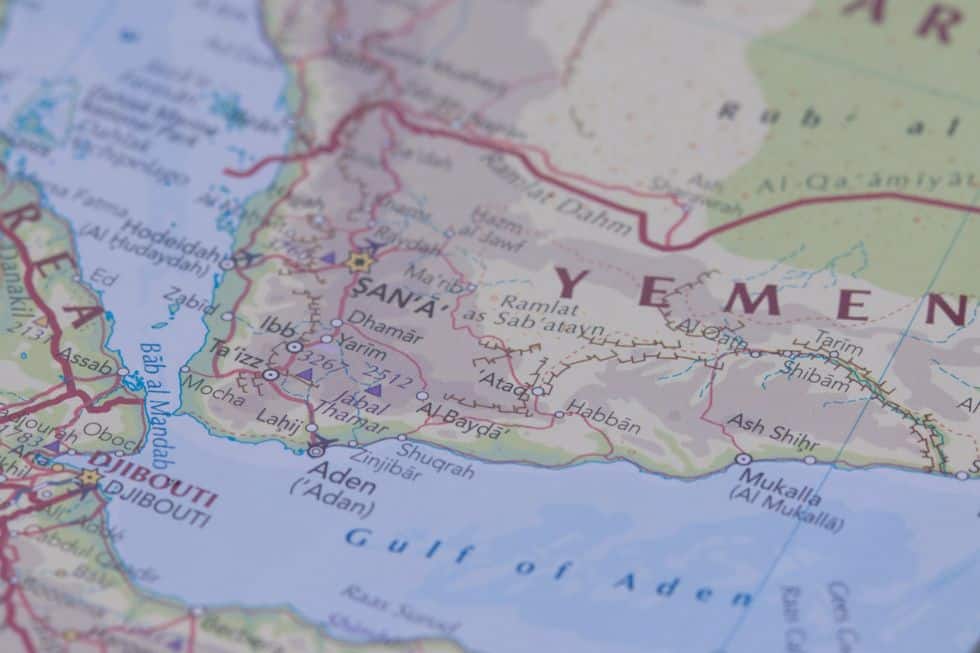The lack of any genuine international political or diplomatic initiative to resolve the Yemen crisis has sadly created a strategic vacuum — one that Iran is rapidly exploiting. Nowhere is this more visible than in Northern Yemen, where Tehran has deepened its partnership with the Houthis.
In the absence of decisive global engagement to bring about a peaceful solution, Iran views Yemen not simply as another conflict zone, but as a key arena in its broader regional project to reshape Middle Eastern power dynamics.
With Iran’s traditional influence receding in Syria, its Lebanese proxy Hezbollah weakened, and Hamas’s infrastructure largely dismantled in Gaza, Tehran now leans on the Houthis as its only and most active and dependable partner in the Middle East region.
Yemen has therefore shifted from a local and regional confrontation zone into a major international conflict zone — one with direct implications for global shipping, energy markets and international security. This confrontation also has major implications for the citizens of Yemen, who have endured one of the worst human catastrophes ever recorded.
Iran’s strategic recalibration
The erosion of its traditional footholds has forced Iran to recalibrate its regional position. Assad’s Syria is no longer a coherent launchpad for Iranian influence, and Lebanon is in freefall. At the same time, the Islamic Revolutionary Guard Corps (IRGC) is pouring more resources into Yemen, where the Houthis offer unique strategic advantages.
Through their control of large swaths of territory in North Yemen and the proximity to the Red Sea, the Bab al-Mandeb Strait and the Gulf of Aden, the Houthis allow Iran to project power far beyond its borders. As the Council on Foreign Relations (CFR) has reported, this reach now extends into the maritime domain, with drone and missile attacks on international shipping designed to disrupt global commerce and apply pressure on Israel and its Western allies.
From tactical support to strategic alliance
What began as limited tactical support has evolved into a long-term strategic alliance. The IRGC has developed vast smuggling networks through Oman and the Horn of Africa to arm the Houthis with precision weapons, according to a Council on Foreign Relations briefing. A 2023 analysis by the Clingendael Institute describes this relationship as a “strategic partnership rooted in shared geopolitical interests.” The Houthis, once a tribal insurgency, have been transformed into a core component of Iran’s regional deterrence strategy.
This alliance has grown even more important in light of Tehran’s fear of exclusion from any post-Gaza regional order. Iran is acutely aware that a diplomatic realignment in the Middle East that excludes it would threaten its long-term security. By enabling Houthi forces to escalate attacks across the Red Sea and into South Yemen, Tehran ensures it cannot be ignored.
Iran is actively shaping the future of regional negotiations, forcing all actors to account for its power — without having to engage directly. This allows Iran to escalate through proxies while maintaining plausible deniability, a tactic it has perfected in Iraq, Lebanon and Syria.
The south in Tehran’s crosshairs
Meanwhile, the focus of most international observers has remained narrowly fixed on Houthi actions in the Red Sea. Yet the more immediate threat lies further south. The liberated regions of South Yemen — free from Houthi control and governed by ideologically moderate southern institutions — are now directly in Tehran’s crosshairs.
Through expanding missile strikes and covert operations, the Houthis are actively targeting southern cities like Aden, Shabwa, Dhale and Mukalla, and threatening critical infrastructure in the Bab al-Mandeb corridor.
As reported by South24, the Houthis have already demonstrated their ability to halt oil exports from the South by targeting energy ports with drones, starving the country of foreign currency and leaving the internationally recognized government dependent on Gulf donors. This tactic allows Iran and the Houthis to choke the South economically, even without full military occupation.
Simultaneously, local intelligence agencies have detected attempts to destabilize liberated areas through Houthi sleeper cells and the recruitment of local proxies — a strategy reminiscent of Iran’s interference in both Iraq and Lebanon.
The objective is clear: prevent the rise of a unified and stable South that could serve as a political alternative to Houthi rule. As highlighted in multiple reports, Iran’s strategic calculus is to keep Yemen fragmented and unstable — an environment where Tehran can exert leverage through chaos, while ensuring that no single actor consolidates enough control to threaten its proxies.
Escalation and human cost
In response to recent Houthi attacks, Israel has shifted from targeting infrastructure to striking command elements in Sana’a, killing mid-level leaders in drone operations. While these operations deliver tactical success, they may also push the Houthis even deeper into Iran’s orbit, further cementing the proxy dynamic.
In the midst of this crisis, civilians suffer the most. Houthi forces continue to exploit every civilian casualty — real or fabricated — for propaganda, while repressing dissent through arbitrary detention, child soldier recruitment and harassment of international staff, including those affiliated with the UN.
The case for a stable South
Amid this deterioration, the liberated south stands as the only viable counterbalance to Houthi and Iranian ambitions. Governed by the Southern Transitional Council (STC), the south has shown its readiness to collaborate with the international community on security, stability and maritime protection. Recent visits by STC President Aidroos Al-Zubaidi to Washington and European capitals have underscored this willingness — and raised the alarm over growing threats from the north.
Supporting South Yemen is not about charity. It is about regional and global security. With control of key ports, energy resources and the vital Bab al-Mandeb shipping lane, the South plays an essential role in protecting international commerce and deterring Iranian expansion. As the Friends of South Yemen and other platforms have documented, stability in the South is critical for safeguarding both local livelihoods and global trade routes.
Yemen now stands at the nexus of regional realignment, great-power rivalry and proxy warfare. The Houthis are no longer just a Yemeni faction — they are Iran’s most operationally active proxy in the post-Gaza era. But the real test for the international community lies not just in condemning Houthi aggression, but in enabling the only viable alternative: a stable, autonomous South Yemen capable of securing its own future and protecting global interests.
Empowering the South is a strategic necessity. It’s time for the world to act — not react. Yemen’s future, and the broader stability of the Red Sea corridor, depend on it.
[Kaitlyn Diana edited this piece.]
The views expressed in this article are the author’s own and do not necessarily reflect Fair Observer’s editorial policy.
Support Fair Observer
We rely on your support for our independence, diversity and quality.
For more than 10 years, Fair Observer has been free, fair and independent. No billionaire owns us, no advertisers control us. We are a reader-supported nonprofit. Unlike many other publications, we keep our content free for readers regardless of where they live or whether they can afford to pay. We have no paywalls and no ads.
In the post-truth era of fake news, echo chambers and filter bubbles, we publish a plurality of perspectives from around the world. Anyone can publish with us, but everyone goes through a rigorous editorial process. So, you get fact-checked, well-reasoned content instead of noise.
We publish 3,000+ voices from 90+ countries. We also conduct education and training programs
on subjects ranging from digital media and journalism to writing and critical thinking. This
doesn’t come cheap. Servers, editors, trainers and web developers cost
money.
Please consider supporting us on a regular basis as a recurring donor or a
sustaining member.
Will you support FO’s journalism?
We rely on your support for our independence, diversity and quality.









Comment